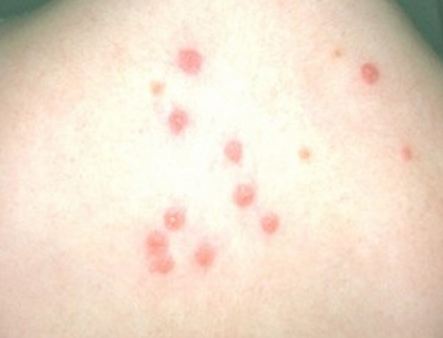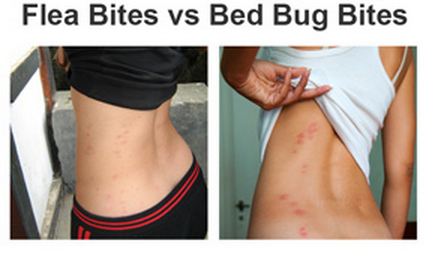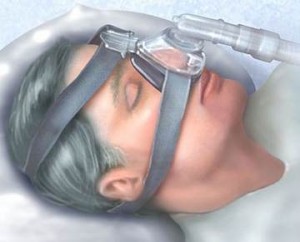Flea Bites on Humans – Pictures, Treatment, Look Like, Get Rid
What are Flea Bites?
A flee is a brown bug with a shell that is hard. It is small blood sucking insect. It feeds most often on animals but it can also bite humans. Fleas, are wingless creature, have claws which are tiny that helps these tiny little creatures to attach to warm blooded animals or persons and suck their blood. Hence, the flea bite emerges. The flea has anticoagulant that encourages the blood to still keep flowing.

Flea Bites on Humans Symptoms
If you were bitten by a flea, you might encounter the symptoms such as:
- Itchy feeling
- After a bite, a red, swollen wheal or rash develops within thirty minutes
- The legs and feet are often the target areas of these wicked fleas
- Secondary infection can occur which is caused primarily by scratching
- Hypersensitivity to the bite or the so called hives may occur
How do Flea Bites look like on Humans?
Mostly, when the fleas bite a human being, they are often not felt, yet it leaves an itchy sensation and a red halo on an unprotected skin. It is terribly itchy when you are bitten by a flea. Its itchiness last for distressful long hours. There are different kinds of fleas that can bite a human being namely dog flea, human flea or cat flea. Children are reportedly the victims of the flea bites because they have more sensitive skin than that of adults.
When you have been bitten by a flea, expect that it won’t look like mosquito bites or pimples. The bites from this creature are much smaller. They look like tiny red bumps which are raised. It is like your blood was drawn and you had a small, red raised bump from that of a needle. It looks like that due to the fact that the fleas are specified for animals. As soon as they bite you, they realize that you are not what they want and it suddenly jumps off of your body area. Thus, this will leave you with the small raised bumps.
How long do Flea Bites last on Humans?
Different person has different healing modes. When you have been bitten by a flea, normally it should take for as long as two weeks for it to completely vanish. You must keep in mind that to be able for recuperation to occur, you must not scratch the area that was bitten by the flea. If you do scratch that area, it will take a much longer time for the area to heal.
Flea Bites on Human’s Treatment
The good thing when you have been bitten by a flea is that you can treat it.
Clean the Bitten Area
The first thing that you do when you suspect that you have been bitten by a flea is that you clean the bitten area with an antiseptic or germicidal soap.
Application of Ice
If you noticed that the bites are swollen and inflamed, it is very much suggested that you apply cold ice packs to relieve the inflammation or the swelling.
Topical Anti Inflammatory Medications
If itchiness is your problem, there are topical medications that you can buy over the counter or can be bought with prescription in your chosen pharmacy. These medications, such as calamine lotion and anesthetic creams will treat and prevent you from further itching. A 1% hydrocortisone cream which can be bought over the counter can also be use to relieve the itchy feeling.
Never Scratch!
The most important thing that you need to remember when you have been bitten by a flea is that you must be able to resist yourself from scratching that area. Scratching the itchy area will result to wounds and having wounds will make you at risk for infection, which can be another problem on your behalf.
Seek Medical Treatment
If the symptoms worsen, or an infection develops, it is highly suggested that you see the doctor as soon as possible. Also, you must seek treatment for a possibility of tapeworm infection. Fleas have a possibility of transmitting tapeworm through their bite. In addition, you can go ask your pharmacist with regards to the appropriate and effective antihistamine kind of medication that will help in reducing the inflammation.
How to get rid of Flea Bites on Humans
There are two important things to bear in mind when you will prevent the occurrence of being bitten by a flea: treat your pet and treat your house.
Treat your Pet
Animals that are infested with fleas should be treated for several weeks. In effectively treating your pets, as a responsible owner you must see a veterinarian and ask help from them to help you in choosing the right and appropriate flea killing products. Treatment medications under this includes solutions or powders which you can apply to the animal’s fur and tablets which is needed to be swallowed by the animal itself. Aside from that, it is necessary that you treat your pet for tapeworm. As mentioned, tapeworm can be transmitted by fleas through their bite.
Treat your House
In treating your house, you must be able to clean thoroughly the bed sheets or the sleeping quarter of your pets and its general surroundings. You must vacuum the carpets. After vacuuming, you throw away the vacuum cleaner bag that contains eggs or fleas or using a spray surface into the bag itself. You must use a right spray or flea bomb and follow the right label directions carefully. Aside from that, the outdoor areas that are commonly used by your pet must be cleaned thoroughly. Such outdoor area that needs to be cleaned is kennels. When cleaning such area, one must put into consideration to be able to prevent the spread of the flea creature; one must wear gloves and long sleeve clothing. You need to be able to repeat the procedure that is mentioned, at least once or twice to be able to make sure that there are no fleas living in that area. Aside from this, you can ask your local council which can offer advice and information with flea infestation.
Flea Bites on Humans Pictures


image 3 – flea bites on legs


image 5 – flea bites Vs bed bug bites
